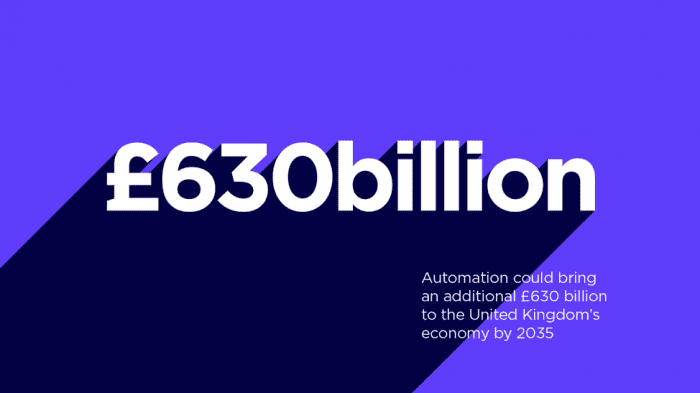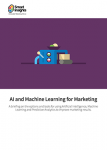Why new artificial intelligence matters for business, from global trend to maximizing marketing and operations spend
AI has progressed quite away from its early beginnings, and its prevalence in modern business models has increased exponentially. Yet, despite this, our relationship with AI has been a tumultuous one, with ‘automation’ becoming something of a dirty word for traditional businesses. But AI is here to stay — and for good reason.
This rise in popularity of utilizing AI in business models comes in part from the development of machine learning and natural language processing. It’s this technology that gives AI the power, when utilized effectively, to aid businesses in numerous practical ways. From increasing staff productivity to boosting customer satisfaction, AI has the promise to meet business objectives at a fraction of the time and cost as with traditional methods like phone and email. Here, we’ll go through some of the ways that the new breed of AI can help your business meet its objectives.
AI: Ready for its close up internationally
The momentum that AI is gathering shows no signs of slowing down, with one governmental report suggesting that automation could bring an additional £630 billion to the United Kingdom’s economy by 2035.

The UK has long been considered leaders in AI development, and public support for it, both in terms of interest and finance, has only helped its growth. The aforementioned report, published by Professor Dame Wendy Hall and Jérôme Pesenti, highlights that we’re now living in a unique period of such technological advancement, that after decades of development in some sectors, AI has reached the stage where it’s ready for widespread application.
A report by the UK’s Royal Society for the encouragement of Arts, Manufactures, and Commerce (RSA) echoed that governmental report, but took the argument one step further; AI is being underutilized in high income countries like the UK and it needs only to be activated. According to Benedict Dellot, through advanced machine learning, robots are now able to work autonomously on skilled tasks such as simple news article writing, trading stocks and shares, undertaking case research for legal firms, and even recognizing faces within images and video.
The takeaway:
- AI is ready for activation in businesses
- The onus is on the private sector to activate AI’s potential
Artificial autonomy
This advanced autonomy has the potential to pay dividends in lead generation and sales capabilities that promise to increase productivity while desiloing sales and marketing activities practically and perfunctorily. In fact, customer-facing technology like chatbots and personal assistants have already begun to implement AI into a slick, cost-effective customer experience model.
Will Thiel of Pointilist highlights the key aspects where artificial intelligence excels. Particularly, Thiel points to the depth of insights that AI is capable of bringing in order to adapt experiences to suit users. Where pre-purchase information on customers is relatively easy to access via advertising campaigns, surveys and promotions, it’s the post-purchase insight that has the ability to give companies an edge in anticipating users’ wants and needs and therefore to provide a compelling CX offering. However, doing this using traditional methods is slow, and so according to Thiel, AI presents the opportunity to “sift through a much, much larger and more complex data space and thereboy uncover many more business opportunities — even opportunities you didn’t realize you should look for.”
Aspects like product usage, online help, technical support and account management can provide unfathomable levels of aggregate or granular data about customers who have used your company. Thanks to AI, this wealth of information has become significantly more accessible for businesses looking to understand better the individuals that pass through their store, both online and offline.
The takeaway:
- AI can autonomously aggregate and crunch data to provide cohesion across sales and marketing
- Data scraping has been democratized and made accessible by AI
Data, insights, and the AI business case
Successful AI and CX integration relies upon three fundamental capabilities: data unification, real-time insights delivery, and business context, according to Thiel.
Data unification used to be a tedious practice, with staff having to spend weeks pulling together data sources manually with the aim of gaining an insight into behavioural analytics. With AI, this traditionally arduous process can now be cheaply, speedily, and (somewhat) easily pursued. In fact, according to Thiel, “customer journey analytics platforms provide this service for a fraction of the cost of the dedicated data services providers of yore — even delivering a level of data integration free of charge.”
For AI to provide effective real-time insights, it needs to convey insights in the moment through whichever touchpoint a customer chooses. While SaaS platforms have APIs and utilize 3rd party integrations as a critical component of their value proposition, they aren’t able to cover all of their bases in terms of the wealth of touchpoint data sources available. AI, on the other hand, provides a credible solution by offering customer journey platforms that can deliver instantaneous touchpoint integration, thanks to a host of APIs options and development kits — all at a fraction of the cost.
The real value of this new wave of AI will be its impact on the businesses that leverage it. Where artificial intelligence was previously able to provide basic analytics and information for CRM platforms, the onus is on AI users and developers to adapt to wholly dynamic, holistic cross-channel customer journeys. Thiel defines business context as an essential intuitive step where technology can identify customer behaviour and interpret the events that manipulate a customer’s actions. AI, in turn, can enable every experience platform become preemptive towards users, and can help pave a website visitor’s path into a mutually beneficial direction.
The takeaway:
- Data unification and customer insight are easily and autonomously accomplished with AI
- The business case for AI rests on its ability to free up human time
AI use cases
In their report, Hall and Pesenti identify a number of specific businesses that have already made progress utilizing AI for data collection and providing a more personalized customer experience. These are the businesses we need to be paying attention to, because they are activating technology in new ways.
One such business deploying AI effectively is Ocado, an online supermarket, who have utilized AI across their e-commerce, fulfilment, and logistics platforms. Desiloing, it seems, has never been a more apparent and beneficial business result when it comes to CX. AI has allowed Ocado to provide predictive analytics, advanced monitoring and oversight, in addition to an enhanced system for managing complex tasks, and also gathering real-time insights from their audience.
Ocado has the ability to incorporate AI into a CX model that’s capable of delivering a personalized service for customers, tailored to their individual needs, with the ability to adapt their user interface depending on whether or not they are new or experienced users. The website can also pre-empt a returning customer’s order based on trends surrounding historically favoured products, creating a system where a 50 item order is possible via a single click of the mouse.
The business case for this level of personalization goes beyond competitive advantage; it allows Ocado to be a thorn in the side of an increasingly homogenous industry.
Away from customer-facing solutions, Ocado’s use of AI is able to process unstructured business data including voice, emails and social prompts, instantly find the swiftest delivery routes for staff, and forecast the public demand of a catalogue of over 50,000 grocery items. Tightening operations means smarter budgeting and more profit.
Ocado’s more ambitious uses for AI include ‘swarm-based learning’, which occurs when one bot or script learns something about the behaviour of a user and instantly shares the acquired information with the rest of the ‘swarm’ and the company’s participation in driverless vehicle trials — with a view to enabling driver-free deliveries.

The takeaway:
- There are few companies activating AI
- The business case for utilizing AI goes beyond creating competitive advantage
- AI’s many facets can be deployed across company teams
Budget allocation
The convenience and cost-effective solutions that AI has the potential to seamlessly provide, as well as carrying the burden of solving scores of customer issues and queries instantaneously, all points to a bright future for businesses looking to adopt artificial intelligence to optimize customer experience. But what of the financial cost?
Azati software investigated how much chatbots, including associated design, management and storytelling, would actually cost businesses looking to provide their customers with instant and seamless interactions. They found that, depending on the sophistication of the bot, prices would vary widely. Though, there are base level costs: a prototype version of the bot, for example, could cost between $3,000 and $5,000, whilst the minimum viable product (or the first draft product), which is exposed to users in order to gain feedback and progress as a bot, could cost anywhere between $10,000 to $20,000.
What about the final product? This figure depends largely on how sophisticated the chatbot is. It could cost anywhere within the region of $15,000 and $100,000, with a more advanced bot occupying the larger sum. The price of the bot, though sizeable, is an arguably justifiable one for ambitious businesses who are looking to nip any overflow of customer communications in the bud — and in the long run, they might even save businesses money.
It’s important to remember here that, though chatbots have the power to handle a substantial amount of customer issues, a human aspect will still be required in order to fully optimize your business’s CX team. Advancements in AI, like chatbots, may well work best alongside their existing human counterparts, not against them.
Ultimately, the future of AI appears to be a bright one, and rapidly advancing technology is only enabling the production of more intuitive solutions. Whether you’re a small start-up or an ambitious, growing business, the benefits of providing customers with an engaging and swift experience with the company promise to be felt for years to come.
The takeaway:
- While budgeting for AI and autonomous bots can be cost-saving, a cheap option can mean a poor CX
- Customer-facing AI tools like chatbots require the same strategy and time investment as humans to empower them to deliver results
- Best practice for these new technologies continues to be placement alongside existing human counterparts
